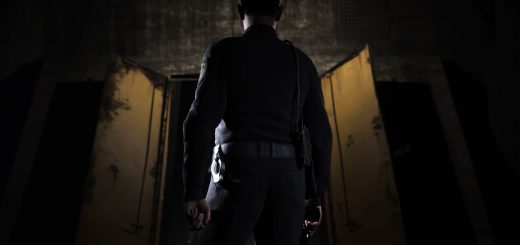Super Mario Maker 2: how Nintendo's switching up its DIY platformer
Super Mario Maker 2 is shaping up as an excellent sequel that’s a perfect match for Switch’s unique hardware. Based on my time playing it at a recent Nintendo press event, the template of its Wii U and 3DS predecessor carries over with a few on-point additions. Not least, there’s a tantalising hint of just how a Super Mario 3D World port could manifest on the hybrid console. On top of gifting players an overwhelming wealth of tools for creating their own platforming epics, there’s a story mode too, offering a stream of brilliant new levels from Nintendo’s own master designers.
The story mode does a surprising amount to tie everything together. I was surprised by how much it gives Mario Maker 2 a focal point once you boot it up – a backbone, if you will – supposing you’d rather let Nintendo shows off the game’s tools in the best case. Of course, it’s the improved course maker mode – the bit you get to tinker with yourself – that remains the real attraction. On top of its all new items, sounds, bosses and level assets (including sloped surfaces, as a series first) there’s now a brand new play style. Mario Maker 2 lets you build levels with visuals based on the Wii U’s much-loved Super Mario 3D World, showing what might even be a new engine for the series, with its own unique mechanics and demands.
There are a lot of new features to enjoy over and above this. The expanded online multiplayer lets you jump into an ocean of user-made levels with up to four players, while you can actually build levels in groups of two. But Switch’s biggest advance over Wii U is easily in the course maker mode. The 3D World style is in the extra styles section, and while mechanically it’s still a 2D side-scroller – unlike the actual game – it comes with a host of visual upgrades over the preceding New Super Mario Bros U style. The fact is that Mario 3D World is one of a handful of Wii U titles to still not get a Switch conversion of some kind, and Mario Maker 2 gives us the ability to see how a port might turn out.
So how does it work? Under the styles section, the original four modes – from Mario Bros 1, 3, World and New Super Mario Bros U – are all accounted for, and freely interchangeable. Visually speaking these translate as-is from the Wii U version. The rules and mechanics differ with each style, but fundamentally they adhere to a similar enough logic that you can switch between them on the fly, after level creation. Supposing you want to change to or from 3D World style, though? Well, that means starting with a blank canvas, building your worlds from scratch. You get translucent pipes, the catsuit and many other mechanics from 3D World that help to spice up the levels. With so much change though, a clean break is needed from the older formats, but it’s one that opens up a wealth of new options.
The new style opens up technical differences too. Inevitably, Switch is being pushed hardest in this way given that Super Mario 3D World on Wii U was notable for introducing proper light and shadow interactions, more advanced depth of field, light bloom, and improved specular properties for items like spinning coins. Many of these features are present in the new Mario Maker 2 style, even it’s not precisely the same. After all, without an example of true 3D stages, the tilt-shift style of the actual game doesn’t come across, though next to the Mario Bros U style it is clearly more daring. The quality of assets and the core engine work running underneath are pushed to another level.

